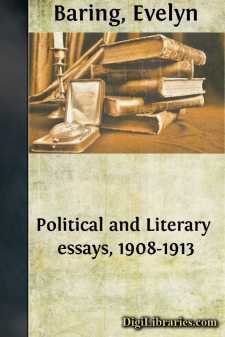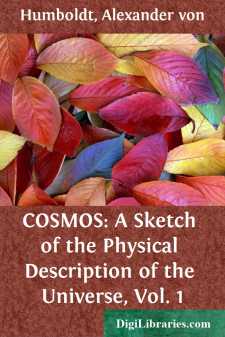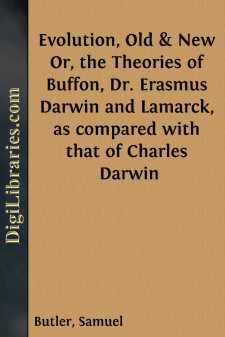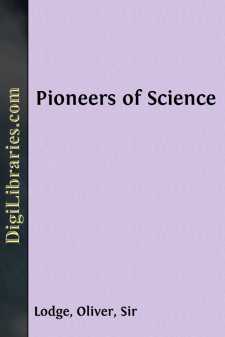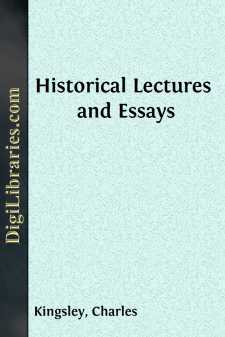History
- Africa 30
- Americas (North Central South West Indies) 50
- Ancient 68
- Asia 58
- Australia & New Zealand 8
- Canada 41
- Caribbean & West Indies 1
- Civilization 20
- Eastern Europe 12
- Europe 310
- Expeditions & Discoveries 60
- General
- Historical Geography 1
- Jewish 9
- Latin America 3
- Medieval 8
- Middle East 13
- Military 248
- Revolutionary 8
- Study & Teaching 5
- United States 353
- Western Europe 56
- World 13
General Books
Sort by:
by:
George H. Devol
BOYHOOD DAYS. "I'll serve his youth, for youth must have his course, For being restrained it makes him ten times worse; His pride, his riot, all that may be named, Time may recall, and all his madness tamed." My Dear Reader: I first saw the light of day in a little town called Marietta, at the mouth of the Muskingum River in the State of Ohio, on the first day of August,...
more...
PREFACE. In preparing the pages that follow, the writer has had in view the desirability of familiarizing the youth of Georgia with the salient facts of the State's history in a way that shall make the further study of that history a delight instead of a task. The ground has been gone over before by various writers, but the narratives that are here retold, and the characterizations that are here...
more...
by:
Evelyn Baring
I THE GOVERNMENT OF SUBJECT RACES "The Edinburgh Review," January 1908 The "courtly Claudian," as Mr. Hodgkin, in his admirable and instructive work, calls the poet of the Roman decadence, concluded some lines which have often been quoted as applicable to the British Empire, with the dogmatic assertion that no limit could be assigned to the duration of Roman sway. Nec terminus unquam...
more...
HISTORY My theme is history. It is an old subject, which has been discoursed about since Herodotus, and I should be vain indeed if I flattered myself that I could say aught new concerning the methods of writing it, when this has for so long a period engaged the minds of so many gifted men. Yet to a sympathetic audience, to people who love history, there is always the chance that a fresh treatment may...
more...
It is now nearly forty years since I assisted my father, the late Charles W. Upham, in the preparation of his work on Salem Village and the Witchcraft tragedy of 1692, by collecting what information could be obtained from the records as to the people and their homes in that locality. In doing this I was enabled to construct a map showing the bounds of the grants and farms at that time. On that map is...
more...
VOLUME I [p 2 is blank] p 3 TRANSLATOR'S PREFACE. ———————————- I CAN not more appropriately introduce the Cosmos than by presenting a brief sketch of the life of its illustrious author.* While the name of Alexander von Humboldt is familiar to every one, few, perhaps, are aware of the peculiar circumstances of his scientific career and of the extent of his labors in almost...
more...
by:
Samuel Butler
Contrary to the advice of my friends, who caution me to avoid all appearance of singularity, I venture upon introducing a practice, the expediency of which I will submit to the judgment of the reader. It is one which has been adopted by musicians for more than a century—to the great convenience of all who are fond of music—and I observe that within the last few years two such distinguished painters...
more...
by:
Oliver Lodge
LECTURE I COPERNICUS AND THE MOTION OF THE EARTH The ordinary run of men live among phenomena of which they know nothing and care less. They see bodies fall to the earth, they hear sounds, they kindle fires, they see the heavens roll above them, but of the causes and inner working of the whole they are ignorant, and with their ignorance they are content. "Understand the structure of a...
more...
by:
Henry P. Bowie
USIC was written in a scrawl impossible to decipher up to the thirteenth century, when Plain Song (Plain Chant) made its appearance in square and diamond-shaped notes. The graduals and introits had not yet been reduced to bars, but the songs of the troubadours appear to have been in bars of three beats with the accent on the feeble note of each bar. However, the theory that this bar of three beats or...
more...
by:
Charles Kingsley
THE FIRST DISCOVERY OF AMERICA Let me begin this lecture with a scene in the North Atlantic 863 years since. “Bjarne Grimolfson was blown with his ship into the Irish Ocean; and there came worms and the ship began to sink under them. They had a boat which they had payed with seals’ blubber, for that the sea-worms will not hurt. But when they got into the boat they saw that it would not hold...
more...




